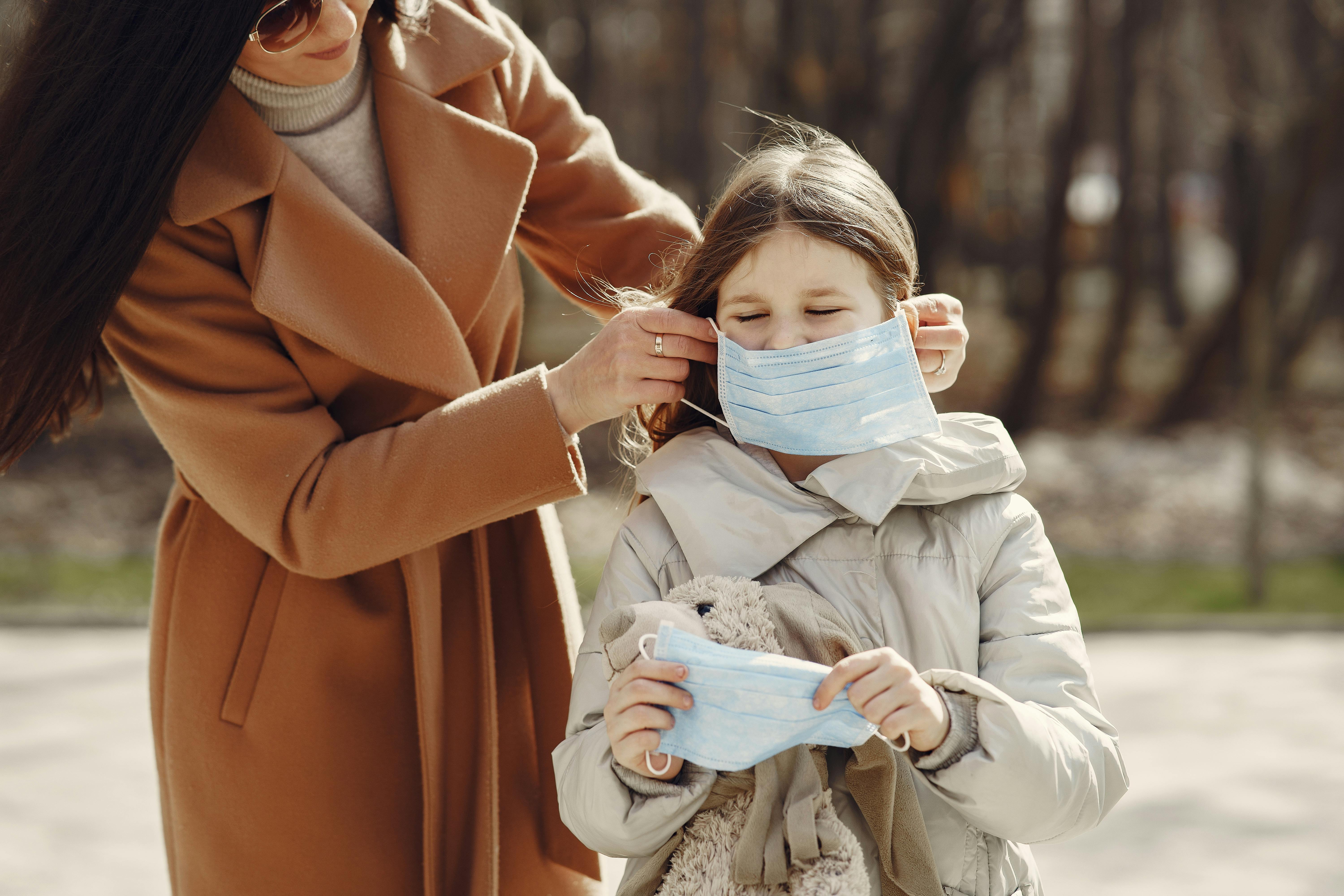Is It Safe To Wear Clothing With Prop 65 Warning

Prop 65 is a California law that requires companies to place warning labels on products containing chemicals that are known to cause cancer, birth defects, or other reproductive harm. This warning label, commonly referred to as a Prop 65 warning, can be found on many items of clothing and other consumer products. While the presence of a Prop 65 warning may cause some concern, it’s important to note that the labeling is simply meant to inform consumers about potential exposures. In most cases, wearing clothing with this warning label is perfectly safe.California Proposition 65, also known as the Safe Drinking Water and Toxic Enforcement Act of 1986, is a law that requires businesses to provide warnings to Californians about significant exposures to chemicals that cause cancer, birth defects, or other reproductive harm. The law also prohibits California businesses from knowingly discharging significant amounts of listed chemicals into sources of drinking water.
Potential Risks of Wearing Clothing with Prop 65 Warning
Clothing labeled with a Prop 65 warning can potentially contain hazardous chemicals that may be dangerous to humans. The California Proposition 65 warning was created in 1986 to help inform consumers about products containing potentially harmful substances. It is important to be aware of the potential risks when wearing clothing that has a Prop 65 warning, as these chemicals can cause serious health effects.
The most common chemicals found in clothing with a Prop 65 warning are formaldehyde, lead, and phthalates. Formaldehyde is a known carcinogen and can cause irritation to the skin, eyes, and respiratory system. Lead is another toxic substance that has been linked to developmental problems in children and adults. Phthalates are used as plasticizers in many products, including clothing, and can disrupt hormones and cause reproductive harm.
Exposure to these hazardous chemicals can happen through skin contact or inhalation when wearing clothing with a Prop 65 warning. For example, formaldehyde present on clothing can be inhaled when it evaporates from the fabric. Similarly, phthalates may be released from synthetic fabrics such as polyester or nylon if they become too warm or rubbed against the skin for extended periods of time.
When shopping for clothes it is important to look for items labeled as “prop 65 compliant” or “no prop 65 warnings” to ensure that you are buying items free of hazardous chemicals. Additionally, it is wise to wash any new clothing before wearing it in order to minimize exposure to any potential toxins that may be present on the fabric. Washing clothes correctly will also help reduce the amount of formaldehyde being released into the air when wearing them.
In summary, it is important to be aware of the potential risks associated with wearing clothing with a Prop 65 warning label. These items may contain hazardous substances such as formaldehyde, lead, and phthalates which could have serious health implications if exposed to them over time. Therefore it is best practice to look for items labeled as “prop 65 compliant” or “no prop 65 warnings” when shopping for clothes and always wash new items before wearing them in order minimize exposure to these toxins.
Is it Safe to Wear Clothing with Prop 65 Warning?
California’s Proposition 65, also known as the Safe Drinking Water and Toxic Enforcement Act of 1986, requires manufacturers to provide warnings if any of the over 900 chemicals listed by the state are present in consumer products. Many clothing manufacturers have begun adding Prop 65 warnings to their products, leading many consumers to wonder if it is safe to wear clothing with this warning.
The short answer is that while Prop 65 warns of potential risks from exposure to certain chemicals, these risks are typically low. The warning is provided as a precautionary measure and does not necessarily mean that the item poses a significant risk to human health. While it is important for consumers to be aware of potential risks from exposure to certain chemicals, many of these risks can be minimized through proper care and handling of clothing items.
Prop 65 requires companies to list any known carcinogens or reproductive toxins present in their products. This includes anything from lead in jewelry or paints on fabric, all the way down to trace amounts found in dyes or glues used in production. The warning labels are designed to alert consumers that these chemicals may be present in the product and should be handled with care.
It is important for consumers to understand that Prop 65 warnings do not necessarily mean that a product poses a significant health risk. In many cases, the chemical levels present may be low enough that they are not likely to pose any health hazard at all. However, it is still wise for consumers to be informed about potential exposures when wearing clothing items with Prop 65 warnings.
By taking steps such as washing new clothing items before wearing them or avoiding prolonged contact with products containing known carcinogens and reproductive toxins, consumers can reduce their exposure risk and minimize any potential health hazards posed by wearing clothing items with Prop 65 warnings.
Overall, while it is important for consumers to be aware of potential risks associated with wearing clothing items with Prop 65 warnings, these risks can often be minimized through proper care and handling of the product. Consumers should also remember that most items containing these chemicals will not necessarily pose a significant threat unless there is prolonged contact or ingestion of the chemical itself.
Do All Clothing Contain Chemicals Covered by Prop 65?
No, not all clothing contains chemicals covered by Prop 65. Prop 65 is a California law that requires businesses to provide warning labels on products containing certain chemicals that are known to cause cancer or reproductive harm. These chemicals can be found in a variety of everyday products, including clothing. However, not all clothing contains these chemicals and therefore would not require a Prop 65 warning label.
Prop 65 warnings are usually found on items that contain dyes, finishes, or fabric treatments that may contain these hazardous chemicals. For example, some denim garments may have been treated with formaldehyde or other hazardous chemicals during the manufacturing process, which would require a warning label. However, untreated or undyed garments generally do not contain any hazardous chemicals and as such would not require a Prop 65 warning label.
It is important to note that while many clothing items do not contain any of the hazardous substances listed in Prop 65, it is still important to read labels and research materials used before making any purchase. This will ensure you are aware of any potential health risks associated with the item you are buying and will help you make an informed decision when shopping for clothing.
Are There Alternative Options to Wearing Clothing with Prop 65 Warning?
When shopping for clothing, it is important to consider the materials used and any potential health risks. In California, clothing labels must include a warning about potential exposure to chemicals known to cause cancer, birth defects, or other reproductive harm under Proposition 65. This warning can be daunting and many consumers may wonder if there are alternative options for clothing that do not include this warning.
Fortunately, there are several ways to reduce your exposure to the chemicals covered by Proposition 65 when purchasing clothing. The first step is to read the label carefully and look for certifications such as Oeko-Tex and Global Organic Textile Standard (GOTS). These certifications indicate that the product has been tested for a range of chemicals and hazardous substances and is considered safe for wear.
Another way to reduce your exposure is to choose natural fibers such as cotton, linen, wool, or hemp. Synthetic fabrics such as polyester, rayon, and acrylic may contain chemicals or dyes that could be harmful if worn over an extended period of time. Natural fabrics are not only safer but often more durable and lightweight too.
Finally, consider buying secondhand clothing from thrift stores or online retailers such as eBay or Poshmark. This can be a great way to save money while also reducing your exposure to potentially dangerous chemicals. Secondhand clothes have likely already been washed multiple times so any potential residue from manufacturing should have already been removed.
Overall, while it can be intimidating to see the Prop 65 warning on clothing labels in California, there are several alternative options available that can help reduce your exposure to these hazardous chemicals. By reading labels carefully, choosing natural fibers whenever possible, and considering secondhand options you can reduce your risk of being exposed while still enjoying stylish clothes.

The Benefits of Wearing Clothing with Prop 65 Warning
Wearing clothing with Prop 65 warning labels can be beneficial for people in a variety of ways. This warning label is designed to alert consumers about the presence of chemicals known to cause cancer, birth defects, or other reproductive harm. By being aware of the potential risks associated with certain products, consumers can make informed decisions about their purchases and better protect themselves and their families from potential exposure.
One major benefit of wearing clothing with Prop 65 warnings is that it allows consumers to be aware of any potential toxins that may be present in the clothing they are purchasing. This information gives them the ability to make an educated decision on whether or not they should buy a particular item. Additionally, this warning label helps individuals understand what specific chemicals they are being exposed to and how best to avoid exposure.
Another benefit is that it encourages manufacturers to reduce or eliminate toxic chemicals in their products. By having this label on their products, manufacturers are incentivized to create better quality items that are safer for consumers. This helps protect both consumers and the environment from potentially harmful chemicals.
Finally, wearing clothing with Prop 65 warning labels can help raise awareness about the potential dangers associated with certain chemicals in consumer products. This increased awareness can help people make more informed decisions when it comes to buying clothing and other items for themselves and their families. By being aware of what chemicals may be present in a product, people can take steps to reduce their exposure and protect themselves from potentially hazardous substances.
Is There a Prop 65 Warning for Wearing Ballet Flats?
Fashion enthusiasts often wonder, “is ballet flats illegal?” While there isn’t a specific law banning ballet flats, Proposition 65 warnings in California may apply if they contain harmful substances. Always check labels to ensure you’re making safe and stylish choices when stepping out in these classic shoes.
What Types of Chemicals are Covered under Prop 65?
Prop 65, also known as the Safe Drinking Water and Toxic Enforcement Act, is a California law that requires businesses to provide warnings to consumers before exposing them to certain chemicals. It covers over 850 chemicals, including both naturally occurring and synthetic chemicals. The list includes a wide range of chemical compounds such as lead, mercury, arsenic, cadmium, and phthalates. It also includes certain pesticides and solvents like trichloroethylene and benzene. Additionally, Prop 65 includes some flame retardants such as polybrominated diphenyl ethers (PBDEs). Finally, it covers food additives like trans fats and artificial colors.
By providing this information to consumers, Prop 65 allows them to make informed decisions about the products they purchase and use. This helps protect them from potential health risks associated with exposure to these chemicals.
Are Consumers Adequately Protected by Prop 65?
California’s Proposition 65 (Prop 65) is a law that was passed in 1986, requiring businesses to provide warnings about the potential exposure to chemicals known to cause cancer, birth defects, or other reproductive harm. Prop 65 is intended to help protect people from being exposed to these dangerous chemicals, and it requires businesses to give clear warnings when they are present in any product or service. However, there are some questions about whether Prop 65 is doing enough to protect consumers from these potentially toxic substances.
One of the main criticisms of Prop 65 is that it does not provide enough information about which specific chemicals are present and how they may affect people’s health. The law only requires businesses to list the names of the chemicals that could be present in their products and services without providing any additional information about their potential effects. This means that consumers may not be aware of all the risks associated with a particular product or service, making it difficult for them to make informed decisions about what they buy and consume.
Another issue with Prop 65 is that it does not specify what level of exposure is considered safe for consumers. For example, while a warning label may state that a product contains a certain chemical known to cause cancer, there is no guidance on how much of the chemical must be present before it poses a risk. This can lead to confusion for consumers who may mistakenly assume that any amount of the chemical poses a risk when in fact this may not be true.
Prop 65 has also been criticized for its vague enforcement guidelines which make it difficult for businesses to know exactly what they need to do in order to comply with the law. While businesses must include warnings on their products and services, there are no clear standards as far as how prominently those warnings should be displayed or how frequently they should be updated if new information becomes available. This lack of clarity can lead some businesses to inadvertently violate Prop 65 without even realizing it until after they have been cited for violating the law.
Overall, while Prop 65 has done much good by helping raise awareness about the potential dangers of certain chemicals and providing more transparency for consumers, there are still many areas where improvements can be made in order for it to better protect people from potentially hazardous substances.

Conclusion
It is important to understand that Prop 65 warnings do not indicate that a product is unsafe. Instead, the warning label serves to inform consumers of the potential presence of certain chemicals which could be hazardous if exposed to in large quantities or for long periods of time. While it may be safe to wear clothing with Prop 65 warnings, it is always advisable to research the chemical compounds listed on the label and take necessary precautions such as washing clothing after each use, keeping away from skin contact when possible and wearing protective gear when necessary. Ultimately, it is up to you, as a consumer, to decide if wearing clothes with Prop 65 warnings is something you are comfortable doing.
In summary, Prop 65 is a California-based law designed to protect residents from exposure to potentially hazardous chemicals found in everyday products. It does not necessarily mean that a product or garment with a warning label is unsafe for use and can still be worn without any major health risks. However, it is important for consumers to take precautionary steps such as reading the labels closely, washing their clothes regularly and wearing protective gear when necessary in order to reduce any unnecessary exposure.
